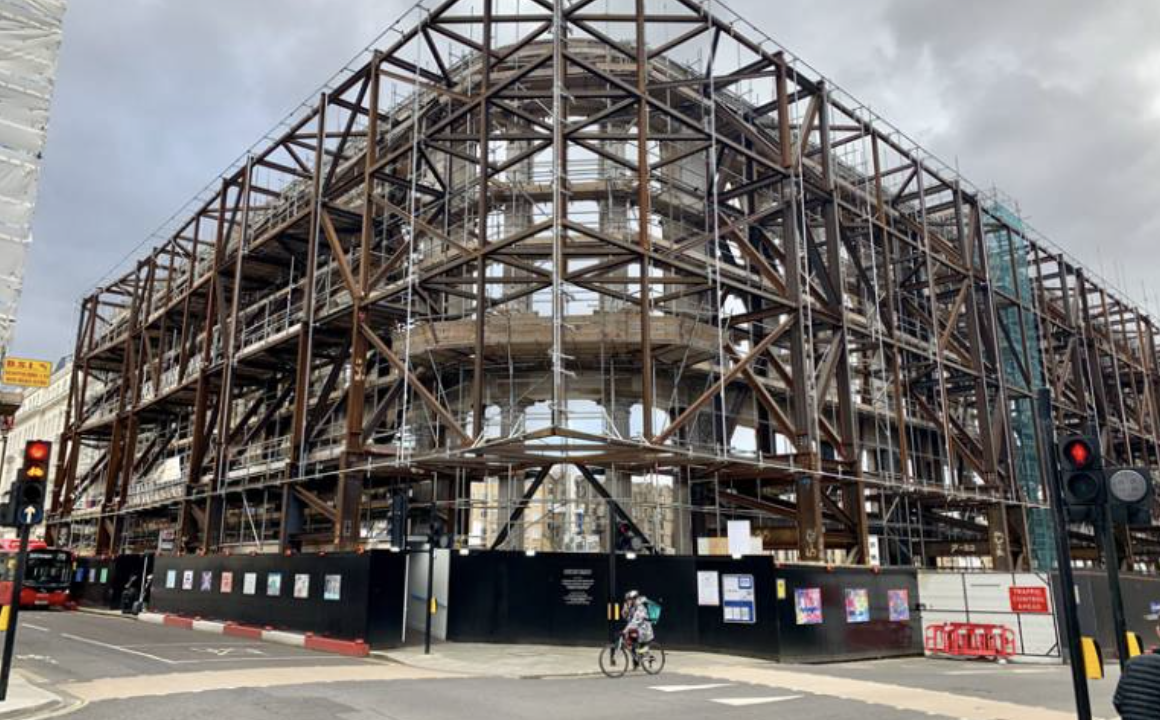
Bartlett Research Conversations: Clemency Gibbs
Tue 18 May 2021
16:00 -17:30
MPhil/PhD student Clemency Gibbs discusses her research into façadism in London since the 1970s.
Abstract
This research examines the architectural practices encompassed by the term ‘façadism’ as relate to historic buildings, focusing on London examples since 1970.
Façadism is a wide-reaching term that is used to describe a variety of urban development projects that privilege the façade of a building above other elements. This research uses façadism case studies to explore the hypothesis that there currently exists a gap between critical heritage theory and conservation practice. Whereas the former conceives of heritage as a discursive process of production rather than a physical entity to be consumed, façadism practices reduce historic buildings to visual and material stimuli, suggesting a continued preoccupation with these structures’ aesthetic qualities.
This research looks to identify the reasons behind the introduction and ongoing evolution of modern façadism practices, examining the principles that inform the decision-making process at a policy level and their impact on the discursive potential of built urban heritage.

General Info